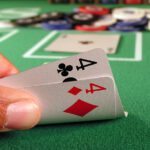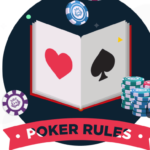Introduction
In last week’s edition of this series, we looked at some specific things that you can tell about the flop texture that will give you a good idea of which types of flops are good for continuation betting with all other factors being considered equal. That’s some pretty general information, and this week we’re going to be getting a bit more specific by looking at the hands that we could hold in different situations on the flop.
Note: If you need a refresher on hold’em hand combinations before reading this article, then refer to this post for a quick guide with shortcuts.
Why Your Starting Position Matters
Suppose you open raise pre-flop, only the big blind calls, and it comes A94 with no possible flush draws. How you’ll want to handle this situation can vary depending on where you opened from pre-flop. When you have a tighter pre-flop range (ie: from early position), then you’re naturally going to have more value betting hands relative to the rest of the size of your range. Along similar lines, having a looser pre-flop range means that you’ll have a lot more missed hands and draws.
One way to think about playing the flop is to consider your range as a whole. You can do this by considering your value betting hands, the hands that are clear semi-bluffs and the hands that are a lower level of semi-bluff. Finally, you’ll have hands with little to no value outside of a pure bluff. We’re going to look at each type of bluffing hand here.
Solid, Obvious Semi-Bluffing Hands
Flush draws and straight draws should typically be played very aggressively with a lot of continuation betting and firing the second barrel on the turn as your default against most players. Playing passively results in a much lower average profit with these hands. Aside from 8+ out draws, there are other obvious semi-bluffing hands in a lot of situations.
For example, suppose you have AQs on a board of KT3 with no possible flush draws. This is an excellent semi-bluffing hand because you have four outs to the nuts along with three outs to top pair. If you bet and get called, then it’s possible you could gain the best hand if you catch a queen as well. If you add in a backdoor flush draw, then your hand has some serious power.
In general, you’re basically always going to semi-bluff with these hands on the flop against a single opponent with very few exceptions.
Less Obvious Semi-Bluffing Hands
Slightly down the list, you have the hands that are not-so-obvious semi-bluffing hands. These hands typically have a few outs on the flop combined with chances for very profitable double barrel bluffs. A good example of this would be AsTs on a board of Js6d4c. On the flop, you have the three ace outs which are likely to give you the best hand a lot of the time and a chance to catch a ten to outdraw someone who calls with second pair.
Where the magic really happens with this hand is on the turn. Any spade gives you a nut flush draw. Any king or queen gives you a gutshot straight draw to the nuts on top of your ace overcard, but what’s really important to notice is that these would both be good cards to bluff on anyway because they very easily represent you catching top pair with a hand like AK/AQ/KQ that you bluffed with on the flop.
Overall, you’re usually going to make continuation bets with these hands unless you’re up against an opponent who raises a lot of c-bets or who just doesn’t fold much at all (ie: pure calling station types).
The Worst Semi-Bluffing Hands
Below that on the totem pole, you’ve got hands that have just a small amount of semi-bluff value in terms of outs or blockers without having much to double barrel with. A good example of this would be something like K8 on a flop like Q75 with no flush draws or backdoor flush draws. You do have the three king outs sometimes, and a six will give you an open-ended straight draw on the turn, but this is about as bad as it gets in terms of semi-bluffing value.
With these types of hands, you need to have a good bit of fold equity to begin with to pull it off. What you’ll notice here is a pattern where the fewer outs your hand has, the more fold equity you need to make it work. Along these lines, you have to really pick and choose your flops for the range your opponent is likely to have before you semi-bluff with these hands.
Hands That Completely Miss
A lot of hands just completely miss, and there’s not much you can do with them in terms of having any kind of reasonable equity. For example, the flop might come something like K99 and you’re holding 76s with no flush draw. If you have a lot of fold equity, it’s not terrible to fire one barrel with these hands on the right boards against opponents who fold to a lot of c-bets. Other than that, you have to be careful not to just fire a c-bet automatically and waste money.
Hands With Showdown Value
Be mindful of the hands you have on the flop which are best to check down for showdown value, and avoid playing your range in an inefficient way by bluffing with them. For example, A9 on a flop of Q84 with no flush draw is a good hand to check down with, and 33 would be good to check down with on that board as well. The hands you choose to bluff with shouldn’t have much showdown value because that showdown value makes checking more valuable than it would be normally if you missed the flop.
Submit your review | |










